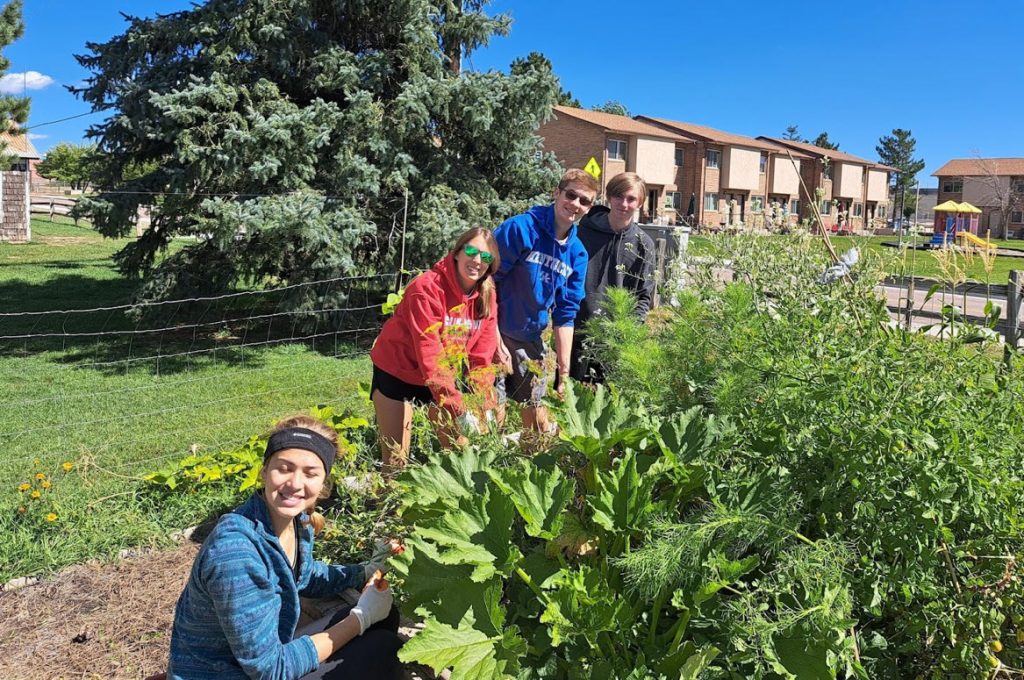By Janet Sellers
Here we are, mid-season for landscaping and garden beds. We need to know how to protect them. In our natural local ecosystem, plants and nature co-evolved to thrive. That is their job. But we humans make changes to places. Homes in tracts or ranches can severely imbalance natural spaces. Can we keep what we like and deter what we don’t, including pests of the insect and animal kind?
Key to success is keeping nature’s helpers in the landscape—they work around the clock:
- Mint: The strong, fresh scent of mint is a well-known deer deterrent; garlic: The smell of garlic effectively keeps deer away. Lavender’s strong, floral scent is disliked by deer. The spicy smell of hot pepper flakes or cinnamon are scents deer, rabbits, squirrels (and cats) tend to avoid. Coffee grounds mask the scent of plants and deter invaders, too.
- Deer avoid double fencing. Having a second 4-5-foot garden perimeter fence helps, since deer don’t want to get caught or stuck there.
- Fenced yards with dogs can be a good resource. For millennia, canine companions have had the job of protection for communities, landscapes, farms, and homes. For example, in Scotland, the Sheltie dog had traditional jobs to “bark, herd, and deter,” protecting food gardens from sheep and other animals.
Plant bouncers, decoys, and enforcers
Knowing about plant helpers supports our landscapes amid the natural systems we live in. We need native plants for our places to thrive: milkweed, goldenrod, and so on. Finding the best native plants to add in our gardens is a win-win. They are ready to go to work, thrive, and bloom locally.
Natural insect bouncers function and are safe. (Man-made pesticides, which are actually insecticides, kill all insects, the good and “bad”). Nature already has our answers to issues we wouldn’t have if we actually knew how to do gardening with nature. Nicole Johnsey Burke of Gardenary.com, shares her tips for us such as:
Beautiful bouncers deter by scent: mint (use in pots or it goes all over), basil, lavender, rosemary, sage. Second are garlic and chives (which have gorgeous global flowers, by the way). Garlic can line up alongside the greens, marigolds, particularly the yellow, short French marigolds in the aster family, as good border control.
Decoys, sacrifice plants, feed pests that get through our bouncers: nasturtiums, zinnias, and sunflowers to name a few. Dill, fennel, and carrot family plants attract caterpillars and stop their entry to our favored plants.
We can attract what Burke calls the enforcers, good bugs that powerfully control pests: ladybugs, certain kinds of small parasitic wasps (not bad guys) and others that feast on the pests we don’t want eating our gardens. They are attracted to the flowers of the carrot family (cilantro, parsley, dill) and others, then feast on the bad bugs, larvae, and caterpillars. Adding in pollinator-friendly flowers with pollen such as cosmos, coreopsis, and zinnias attract our garden helpers, too.
Moles are carnivorous and eat insects and grubs, daily consuming up to 100% of their body weight in these. Their presence indicates an overabundance of pests—they are only after the pests. But their digging can damage the garden. Trap-and-release removal (far, far away from the ‘hood) works, but owning a cat that enjoys walking through garden beds is a very effective, historical deterrent to rodents—footsteps leaving predator pheromones and deterring garden pests. Castor oil in a dry spread made with a mix of a pound of clay cat litter and a cup of castor oil works well; repeat after rains. Low-tech methods: kids’ pinwheels placed here and there on the lawn or a homemade plastic bottle thumper with “finned” plastic bottles near a mole entrance.
Janet Sellers shares proven “lazy gardening” tips and ideas to help us thrive in our high altitude desert mountain climate. Contact her at JanetSellers@ocn.me.
Other Gardening articles
- High Altitude Nature and Gardening (HANG) – Gardening with nature’s beautiful bouncers (7/3/2025)
- High Altitude Nature and Gardening (HANG) – Enjoying nature in summer, high altitude landscaping, and weed control (6/7/2025)
- High Altitude Nature and Gardening (HANG) – May: new trees from tree branches, plant partners, bee kind (5/3/2025)
- High Altitude Nature and Gardening (HANG) – Earth Day and the joys of gardening (4/5/2025)
- High Altitude Nature and Gardening (HANG) – Wild outdoors: pine needle bread, gardening in March (3/1/2025)
- High Altitude Nature and Gardening (HANG) – Fermented February, cocoa mulch, and a chocolate “workout” (2/1/2025)
- High Altitude Nature and Gardening (HANG) – January is a seed starter month (1/4/2025)
- High Altitude Nature and Gardening (HANG) – Winter, our backyards, and forests (12/5/2024)
- High Altitude Nature and Gardening (HANG) – Let’s protect our forests, soil, and gardens (11/2/2024)
- High Altitude Nature and Gardening (HANG) – The garden as investment: gardening is like banking (10/5/2024)










